 W
WAlphonse Gallaud de la Pérouse, better known as Zo d'Axa, was a French adventurer, anti-militarist, satirist, journalist, and founder of two of the most legendary French magazines, L'EnDehors and La Feuille. A descendant of the famous French navigator Jean-François de Galaup, comte de Lapérouse, he was one of the most prominent French individualist anarchists at the turn of the 20th century.
 W
WGuillaume Bautru, comte de Serrant was a French satirical poet, court favourite and a protégé and diplomatic agent of cardinal Richelieu.
 W
WLouis de Boissy was an 18th-century French poet and playwright. He was elected to seat 6 of the Académie française on 12 August 1754. He wrote satires and several comedies, of which the best is Les Dehors trompeurs ou l'Homme du jour, the great success of the 1740 season, with a cast including Quinault-Dufresne and Jeanne Quinault. Boissy had the concession to print the Mercure de France. His son was Louis Michel de Boissy. The historian Louis Michel de Boissy was his son.
 W
WGeorges Charles Brassens was a French singer-songwriter and poet.
 W
WFrançois Cavanna was a French author and satirical newspaper editor. He contributed to the creation and success of Hara-Kiri and Charlie Hebdo. He wrote in a variety of genres including reportage, satire, essays, novels, autobiography and humor. He also translated six books about famous cartoonists.
 W
WElsa Cayat was a French psychiatrist and psychoanalyst and a columnist for the satirical newspaper Charlie Hebdo in Paris, France. She was one of 12 victims of the Charlie Hebdo attack and was killed along with the seven journalists, maintenance worker, one visitor and two police officers. She was the only woman working for Charlie Hebdo to die in the attack. She was one of two Jews killed in the attack, along with Georges Wolinski.
 W
WStéphane Charbonnier, better known as Charb, was a French satirical caricaturist and journalist. He was assassinated by Islamic terrorists during the Charlie Hebdo shooting on 7 January 2015.
 W
WFrançois-Antoine (de) Chevrier was an 18th-century French satirist and playwright. Adolphe van Bever defined him as "the most satirical and the least sociable".
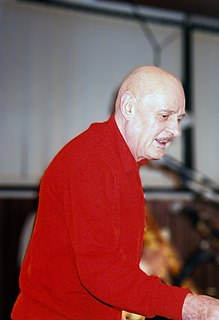 W
WGeorges Bernier, more commonly known as Le Professeur Choron, was a French humorist and founder of Hara Kiri magazine.
 W
WSavinien de Cyrano de Bergerac was a French novelist, playwright, epistolarian and duelist.
 W
WHonoré-Victorin Daumier was a French printmaker, caricaturist, painter, and sculptor, whose many works offer commentary on social and political life in France in the 19th century.
 W
WPierre Desproges was a French humorist. He was born in Pantin, Seine-Saint-Denis. According to himself, he made no significant achievements before the age of 30. From 1967 to 1970, he worked as: life insurance salesman, opinion pool investigator, "lonely hearts" columnist, horse racing forecaster, and sales manager for a styrofoam beam company.
 W
WJean Ferrat was a French singer-songwriter and poet. He specialized in singing poetry, particularly that of Louis Aragon. He had a left-wing sympathy that found its way into a few songs.
 W
WLéo Ferré was a Monégasque poet and composer, and a dynamic and controversial live performer, whose career in France dominated the years after the Second World War until his death. He released some forty albums over this period, composing the music and the majority of the lyrics. He released many hit singles, particularly between 1960 and the mid-seventies. Some of his songs have become classics of the French chanson repertoire, including "Avec le temps", "C'est extra", "Jolie Môme" and "Paris canaille".
 W
WAnatole France was a French poet, journalist, and novelist with several best-sellers. Ironic and skeptical, he was considered in his day the ideal French man of letters. He was a member of the Académie française, and won the 1921 Nobel Prize in Literature "in recognition of his brilliant literary achievements, characterized as they are by a nobility of style, a profound human sympathy, grace, and a true Gallic temperament".
 W
WÉlie Catherine Fréron was a French literary critic and controversialist whose career focused on countering the influence of the philosophes of the French Enlightenment, partly thorough his vehicle, the Année littéraire. Thus Fréron, in recruiting young writers to counter the literary establishment became central to the movement now called the Counter-Enlightenment.
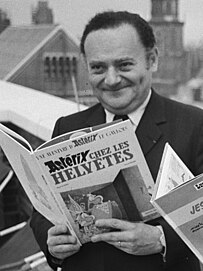 W
WRené Goscinny was a French comic editor and writer, who created the Astérix comic book series with illustrator Albert Uderzo. Raised largely in Buenos Aires, Argentina, where he attended French schools, he lived for a time in the United States. There he met Belgian cartoonist Morris. After his return to France, they collaborated for more than 20 years on the comic series Lucky Luke
 W
WMarcel Gottlieb, known professionally as Gotlib, was a French comics artist/writer and publisher. Through his own work and the magazines he co-founded, L'Écho des savanes and Fluide Glacial, he was a key figure in the switch in French-language comics from their children's entertainment roots to an adult tone and readership. His most relevant works include Rubrique-à-Brac, Rhâââââ-Lovely, as well as Rhâââââ-gnagna, Gai-Luron, and Superdupont.
 W
WPhilippe Honoré, known by the pen-name Honoré, was a French cartoonist and a long-time staff member of Charlie Hebdo.
 W
WAlfred Jarry was a French symbolist writer who is best known for his play Ubu Roi (1896), a pataphysical work which depicts the bourgeoisie as the super-mediocre. He coined the term and philosophical concept of pataphysics, which uses absurd irony to portray symbolic truths.
 W
WMaurice Joly (1829–1878) was a French publicist and lawyer known for his political satire titled Dialogue aux enfers entre Machiavel et Montesquieu ou la politique de Machiavel au XIXe siècle, that attacked the regime of Napoleon III. Available English translations include: Dialogues in Hell between Machiavelli and Montesquieu by Herman Bernstein, and The Dialogue in Hell Between Machiavelli and Montesquieu by John S. Waggoner.
 W
WJean-Baptiste Alphonse Karr was a French critic, journalist, and novelist.
 W
WRénald Luzier, known by his pen name Luz, is a French cartoonist. He is a former contributor to the satirical magazine Charlie Hebdo and drew the cover of the first issue of the publication following the 2015 Charlie Hebdo shooting, an image of Muhammad holding a sign reading "Je suis Charlie" under the slogan "All is Forgiven".
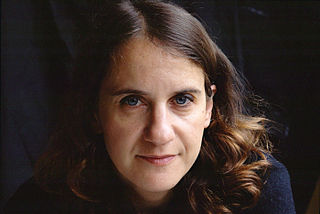 W
WCorinne Maier is a Swiss-born, French psychoanalyst, economist, and best-selling writer. She is best known for being the author of Bonjour paresse, a cynical critique of French corporate culture. In 2016, Maier was named as one of the BBC 100 Women.
 W
WOctave Mirbeau was a French novelist, art critic, travel writer, pamphleteer, journalist, and playwright, who achieved celebrity in Europe and great success among the public, while still appealing to the literary and artistic avant-garde with highly transgressive novels that explored violence, abuse and psychological detachment. His work has been translated into thirty languages.
 W
WCharles Jean-Baptiste Jacquot, who wrote under the pen name Eugène de Mirecourt, was a French writer and journalist. The main critic of Alexandre Dumas, he contributed novels, short stories and biographies to the French literary life of the second half of the 19th century.
 W
WJean-Baptiste Poquelin, known by his stage name Molière, was a French playwright, actor and poet, widely regarded as one of the greatest writers in the French language and world literature. His extant works include comedies, farces, tragicomedies, comédie-ballets, and more. His plays have been translated into every major living language and are performed at the Comédie-Française more often than those of any other playwright today. His influence is such that the French language is often referred to as the "language of Molière".
 W
WCharles Amédée de Noé, known as Cham, was a French caricaturist and lithographer. Raised by a family who wished for him to attend a polytechnic school, he instead attended painting workshops hosted by Nicolas Charlet and Paul Delaroche and began work as a cartoonist. He eventually took up the pseudonym of "Cham".
 W
WRené Pétillon was a French satirical and political cartoonist and comics artist. As a cartoonist he was most famous for his work in Canard Enchaîné. As a comics artist his best known and longest-running series was the humoristic comic strip Jack Palmer, about a goofy private detective.
 W
WRaymond Peynet was a French cartoonist born in Paris and died in Mougins (Alpes-Maritimes). He is known for having created the couple of lovers in 1942 which he represented on many mediums, including ceramics, posters, jewelry, postcards, and postage stamps. In 1987 Raymond Peynet was promoted Commander of the Ordre des Arts et des Lettres.
 W
WJean Plantureux, who goes by the professional name Plantu, is a French cartoonist specializing in political satire. His work has regularly appeared in the French newspaper Le Monde since 1972.
 W
WMathurin Régnier was a French satirist.
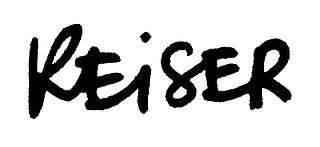 W
WJean-Marc Reiser was a French comics creator.
 W
WRenaud Pierre Manuel Séchan, known as Renaud, is a popular French singer, songwriter and actor. His characteristically 'broken' voice makes for a very distinctive vocal style. Several of his songs are popular classics in France, including the sea tale "Dès que le vent soufflera", the irreverent "Laisse béton", the ballad "Morgane de toi" and the nostalgic "Mistral gagnant". However, with the exception of a recording of "Miss Maggie" in English and a franglais recording of "It is not because you are", his work is almost unknown outside the French-speaking world.
 W
WLaurent "Riss" Sourisseau is a French cartoonist, author and publisher. Since 1992, he has worked for the French satirical weekly newspaper Charlie Hebdo and is now its majority owner.
 W
WJacques Tati was a French mime, filmmaker, actor, and screenwriter. Throughout his long career, he worked as a comic actor, writer, and director. In a poll conducted by Entertainment Weekly of the Greatest Movie Directors, Tati was voted the 46th greatest of all time. With only six feature-length films to his credit as director, he directed fewer films than any other director on this list of 50.
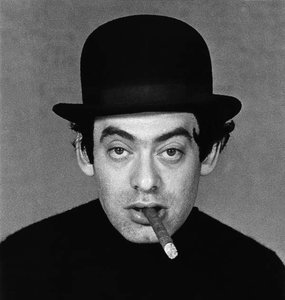 W
WRoland Topor was a French illustrator, cartoonist, comics artist, painter, novelist, playwright, film and TV writer, filmmaker and actor, who was known for the surreal nature of his work. He was of Polish-Jewish origin. His parents were Jewish refugees from Warsaw. He spent the early years of his life in Savoy, where his family hid him from the Nazi peril.
 W
WThéophile de Viau was a French Baroque poet and dramatist.
 W
WFrançois-Marie Arouet, known by his nom de plume Voltaire, was a French Enlightenment writer, historian, and philosopher famous for his wit, his criticism of Christianity—especially the Roman Catholic Church—as well as his advocacy of freedom of speech, freedom of religion, and separation of church and state.
 W
WGeorges Wolinski was a French cartoonist and comics writer. He was killed on 7 January 2015 in a terrorist attack on Charlie Hebdo along with other staff.